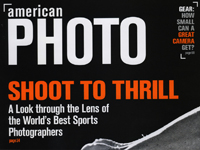
By: Amy Bedik
(Excerpt)
Artists have a long-standing tradition of working with technicians to realize their visions. Michelangelo had his studio assistants laboring away on the Sistine Chapel; Picasso worked with Julio González to fabricate his sculptures; Andy Warhol had an entire Factory of helpers making silk screens and films.
Although photographers have long relied on assistants, the digital revolution has sparked new trends in technical collaboration. As more photographers leave the darkroom behind, capturing their images in pixels instead of film, and become interested in the special properties of inkjet prints, they’re often turning to professional printers who have mastered the medium and can create finely tuned renderings of their work. New printing technologies have made luminous, large-scale digital prints possible but increasingly specialized. Although many photographers still have the expertise and equipment to make their own prints, others are relying – and thriving artistically and commercially – on a close working relationship with skilled printmakers. Here are four such symbiotic partnerships.
Andreas Gefeller
There are times when the artist clearly calls the shots. Andreas Gefeller lives and works in Dusseldorf, Germany, a town he describes as ideal for photographers.” “Distances are short,” he says, “I can get to my printer within a few minutes after he tells me that he has a new test print. That makes the working process very easy.”
Gefeller is perhaps best known for “Supervisions”, a series of large scale images of urban landscapes, made up of hundreds of photos of small details stitched together into a whole via computer. He had the resulting LightJet prints face-mounted behind acrylic glass in a process called Diasec. “The Richness of details is a very important aspect of the images,” Gefeller says. “That’s why I chose a very clean and sharp form of presentation for this series.”
Gefeller has recently finished a new series of photographs of Japanese electrical masts, for which he took a different approach. “I photographed the masts in front of a white sky from below, letting them appear as if placed in a photo studio setting,” he says. Isolated against the sky, the intricately detailed images resemble calligraphic marks or Japanese letters. “The photos look like very fine drawings on white paper,” Gefeller notes. “I decided to print them with inkjet on a more natural paper to intensify the calligraphic effect.”
Gefeller made 12x16 work prints in his studio, tweaking the picture data until the images were to his liking. To create the final prints, which at 40x40 are larger than he can make himself, he turned to Jurgen Halfar, his printer at HSL Fachlabor, who made test strips and revisions with the goal of matching Gefeller’s small prints. More technician than collaborator, Halfar aims to give Gefeller exactly what he wants. But the printer is also proficient in framing and presentation, and through advice and trial and error, he helps Gefeller select the best possible means to his desired ends.